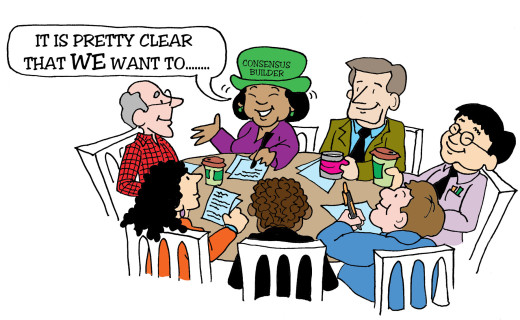Effective planning commissioners are problem solvers.
There are many strictures on how to conduct a planning commission meeting. On the one hand is the old standby, Robert ’s Rules of Order, which can be more a hindrance than a help in its adherence to formal, some say often stifling, conduct; on the other are the administrative rules of your jurisdiction that include elected officials and those appointed such as yourselves.
In between are the ways of doing things that just seem to work, at least some of the time. The central challenge in determining their worthiness is to answer the question: what most helps the board come to closure on the problems it is expected to solve?
At least as important as rules and regulations are the attitudes and modes of operation of commission members in regard to dealing with important issues. Here are some factors to consider.
 Time limits. Setting a reasonable schedule to consider items on the agenda can help you solve problems and proceed to closure in an orderly manner. A printed agenda (7-7:10, call to order; 7:10-7:30, director’s report; 7:30-8:00; commission discussion; comments from the public; etc) alerts everyone, including petitioners, to what is expected; helps the chair keep order and the commission to take care of its business.
Time limits. Setting a reasonable schedule to consider items on the agenda can help you solve problems and proceed to closure in an orderly manner. A printed agenda (7-7:10, call to order; 7:10-7:30, director’s report; 7:30-8:00; commission discussion; comments from the public; etc) alerts everyone, including petitioners, to what is expected; helps the chair keep order and the commission to take care of its business.
Situations arise, of course, when you should be flexible about extending the allotted time, especially if more people from the public want to speak on a given subject than anticipated. On the other hand, some items may take a shorter time than expected. Editor’s Note: for more on how to use your agenda effectively, see Elaine’s “First on the Agenda is the Agenda!”
Monologue vs. dialogue. When considering the items at hand, do members tend to speak just to get their points across without reference to what others or saying, or do you hold a true give and take conversation so that you can learn consider each other’s point of view when you make your decision? If someone is monopolizing the time by just talking without advancing the discussion, it is not out of line for another commission member to interrupt politely by referring to the schedule, asking a question of the director or other members, or finding other ways to institute a true dialogue so that you can, indeed, solve whatever problem is before you.
Debate or discussion. This is closely aligned to the above but different. When you debate you strive to score points for your side, in contrast to a true discussion where there need not be a winner or a loser. The planning commission meeting should not be the setting for a debate where pros and cons are so vigorously defended members lose sight of the ultimate problem with which they are expected to deal.
Consensus or vote. A chair who is tuned in at all times to the conversation should realize when commission members have made their points, generally agreed on a course of action and thus, have reached a point of consensus. Members can help that come about by summing up at a propitious time, “It seems to me we have all agreed to … .”

You can tell by a general nodding of heads if your assessment is correct or by a scowl from one or more members if you have not yet reached that point. When there is assurance that the discussion is over and everything relevant has been said, you have a consensus. That may be all you need to move on to the next item. If protocols require it, you should be ready to vote. By the way, do not always strive for unanimity. If the commission is truly divided, so be it. Move on.

What is the problem? With such a variety of planning matters on your agendas, the breadth of the problems you are asked to solve may not always be clear.This is especially relevant in regards to agenda items for what may seem to be very specific requests … placement of a fence on a corner lot; elevation of a an odd-shaped roofline; etc. Are you dealing with a precedent setting problem or considering an issue unlikely to come up again?
While each item is important to someone and you should not minimize its value, by trying to ascertain whether there is a bigger inherent problem, you may be able to deal on the macro and micro levels at the same time. Your planning director can help you make that determination.
Effective planning commissioners are problem solvers. They also are policy makers, arbitrators, and mediators. Keeping all this in mind when you deal with the issues du jour requires discernment and skill that can be honed with practice.
Elaine Cogan, founding principal of the Portland, Oregon planning and communications firm of Cogan Owens Cogan, has consulted for more than 36 years with communities undertaking strategic planning and visioning processes. Cogan has been honored for her work on a variety of citizen involvement projects.